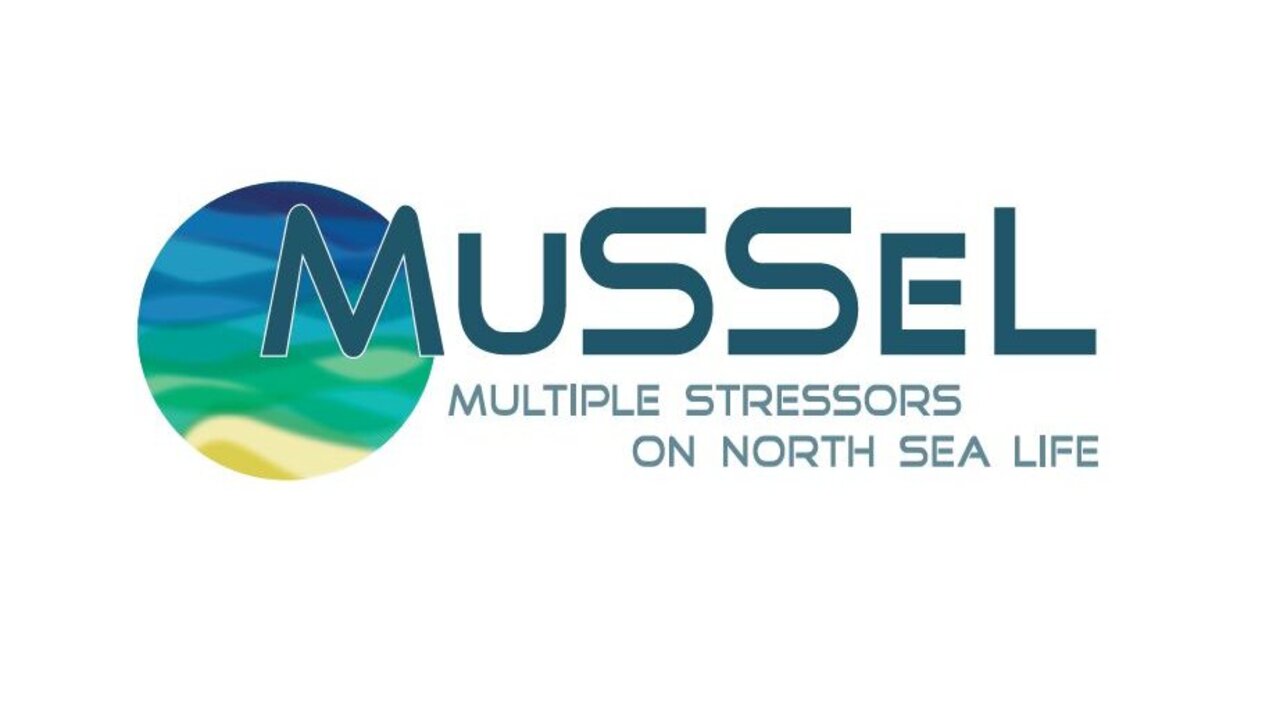Using high-resolution models, we aim to better understand the combined impacts of climate change and human uses on the southern North Sea. The MuSSeL project combines geophysical with novel theoretical models to identify hot spots of change.
Background and Objective
Seabed life in the southern North Sea is exposed to both geophysical changes and growing human activities. How climate change, fisheries and offshore wind farms affect the good ecological status of the seabed and the diversity and functioning of benthic communities, and which risks are associated with this, is so far largely unknown.
The MuSSeL project combines geophysical models with novel theoretical concepts and use scenarios to assess impacts for the past (1980), present and future (2050) and to identify hot spots of change. MuSSeL combines the expertise of research institutions and federal agencies to synthesise anthropogenic stressors such as nutrient inputs, chemical pollution, dredging, landfilling and bottom fishing.
Using high-resolution coupled modelling, we investigate climate-induced changes in marine physics, marine biogeochemistry and sediment transport for the southern North Sea. We follow how both sets of stressors affect changes in pelagic productivity, the composition of benthic organisms and the distribution of demersal fish.
The aim is to integrate the considered cause-effect relationships in an operational model framework. Thus, the effects of use scenarios and thus the risk of cumulative effects on specific ecosystem functions and processes can be assessed. We are specifically working on easy-to-use tools as decision support and advise potential users on their application.
Target Group
Science, Industry, Politics, Agencies, Nature conservation
Approach
At the Thünen Institute of Sea Fisheries, we are working on the application of trait-based methods to analyse and predict cumulative effects of different stressors on the status of benthic epifauna and demersal fish in the southern North Sea. Traits describe functional properties of species and serve as a proxy for their influence on ecosystem processes and ecosystem stability. Furthermore, we are developing an operational model that integrates modelled cause-effect relationships. Specifically, the goals of the Thünen Institute of Sea Fisheries include:
- to develop a concept for the assessment of cumulative effects on epifauna and demersal fish in the southern North Sea,
- to transfer the concept into an operational model for the spatio-temporal prediction of cumulative effects in relation to use scenarios,
- to define functional traits for epifauna and demersal fish with regard to relevant pressures and to analyse their spatio-temporal dynamics with regard to thresholds and tipping points, and
- to develop web-based decision-making tools and consolidate these by stakeholders.
Data and Methods
Thresholds
To address community composition thresholds along environmental and human variable gradients we use machine-learning methods, i.e. Gradient Forest (GF). GF extends random forest models for single species to multispecies responses to variable gradients. GF models fit an ensemble of regression or classification trees for predicting the distribution of organisms as a function of explanatory variables. All data were obtained from open-access repositories, such as GMED (Global Marine Environmental Data).
Our Research Questions
- Where are the tipping points of important environmental variables and stressors that have led to significant changes in functional aspects of the near-bottom fish community in the past?
- How does a conceptual representation for the analysis of cumulative pressures look like?
- What are the combined impacts and associated risks of future management scenarios on seabed ecological status and benthic communities?
Results
Assessment of cumulative effects on seabed communities
The key human activities besides fishing and the rapid expansion of offshore wind farms, identified in the MuSSeL project included the extraction of sand and gravel, and two land-based activities (i.e., agriculture and land-based industry). We identified eleven pressures, resulting from these activities and climate change, that impact the seabed communities of the southern North Sea. Many pressures stem from various activities but enrichment and pollution showed the largest number of sources. We further identified seven species traits that determine the vulnerability of demersal fish to these pressures, among them are not only the typical life-history traits, such as body size, but also reproductive and behavioural traits like breeding or migration strategy. With a Driver-Pressure-State-Impact model we structured and explored the cause-effect pathways among the identified activities, pressures, and species traits.
Thresholds of seabed communities along stressor gradients
We show that a broad selection of anthropogenic and environmental variables, such as natural disturbance of the seafloor and euphotic depth, determined community composition thresholds of 67 epibenthic fauna and 39 demersal fish species along variable gradients in the southern North Sea between 2010-2020. This has the potential to inform resilience assessments under the Marine Strategy Framework Directive to promote and retain a good environmental status of marine ecosystems.
Developing future use scenarios
Together with sectoral experts, we developed optimistic, realistic, and pessimistic scenarios for the identfied key pressures in the German North Sea. These scenarios described the spatial footprint, intensity, and technological advancements of those pressures for the years 2030 and 2060. We show that the forecasts regarding specific targets and intensities of human activities depend strongly on future technological advances. For fisheries and nutrient discharge estimates were less certain due to critical socio-ecological interactions in the marine and terrestrial realm. Overall, our approach unraveled such trade-offs and sources of uncertainties.
Distribution of fish and epibenthos in the southern North Sea
Within MuSSeL species distribution models (SDM) for 169 fish end epibenthic invertebrte species were developed. These models allow to identify core areas of distribution for single species as well as for hotspots of biodiversity. The SDM are based on a modern machine learning technique ("RandomForest") considering data from environmental paramters and human activities (fishing effort, development of offshore windparks).
Links and Downloads
Thünen-Contact

Involved Thünen-Partners
Funding Body
-
Federal Ministry of Research, Technology and Space (BMFTR)
(national, öffentlich)
Duration
11.2020 - 10.2023
More Information
Project funding number: Förderkennzeichen: 03F0862D
Project status:
finished

![[Translate to English:] [Translate to English:]](/media/_processed_/7/1/csm_IMG_7977_large_1defaf5de1.jpg)







